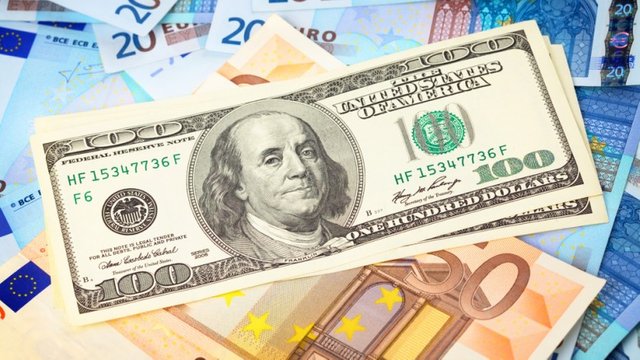Financial crises by differences in the types of US central banks and Europe

Some analysts as Mohamed El-Erian explain that the monetary policies of central banks in the US (The Federal-Fed Reserve) and Europe (the European-ECB Central Bank) will continue to diverge in a large monetary polarization. After a period of alignment, since the crisis of Lehman Brothers in September 2008, they could diverge again, explain these analysts. We will analyze in this article 7 occasions where rates have diverged and how in the middle of those occasions this led to financial and political problems.
Since World War interest rates of central banks US and Europe (first the German Bundesbank with Lombardo and then type the ECB interest rate reference) have diverged in 7 occasions.
Those key moments of divergence of interest rates were in the late 60s, with the dissolution of the Bretton Woods monetary system that had fixed the exchange rate of the dollar gold price. Also, the economic problems of Germany, in the early 80s, by the strong dollar and the weakness of the German mark, the near demise of the European Monetary System early 90s (the predecessor of the Eurosystem issued by the Euro) and soaring euro in 2008, which brought the rate to $ 1.60 per euro, severely damaging the export capacity of the Eurozone.
Divergence 1 with Crisis: 60 and the dissolution of Bretton Woods Monetary System
The first time the post-war crisis took place between 1966 and 1969 when the Bundesbank lowered interest rates from 6 % to 3.5 % , and instead , the US federal fund rate ( the interest rate reference US ) rose from 4.4% to 6.3%. This reflected the weakness of European economies and a desire for the US to stem the outflow of the capital due to the US current account deficit . These imbalances led to a rise in the frame against the dollar and forced the devaluation of the pound in 1967. This was the first wave struck with force to crumble later the Bretton Woods Monetary System from 1971 to 1973 .
2 Divergence crisis early 80s and dollar strength and weakness of the German mark
Between 1980 and 1982 Paul Volcker, Fed chairman, raised rates to 19% (in 1981) to lower inflation created, in part, by the oil price crisis in 1979. The Bundesbank was forced then to follow the path of the Fed, even after initially hesitated. This slowed growth in Germany and brought down the then Chancellor Helmut Schmidt in 1982.
Divergence 3 Crisis: Nearly death of the European Monetary System in the early 90
Between 1991-92 Bundesbank raised interest rates significantly and the Fed maintained a policy of cheap money. Germany decided to raise rates by the inflationary effects caused by the fall of the Berlin Wall in November 1989 and the subsequent reunification of Germany in October 1990. The result was a considerable impact on the European Monetary System with the output of the UK and system Italy, in September 1992, and strong disruptions in the exchange rate of the German mark and the French franc between 1992 and 1993.
Divergence 4: Rise Fed rate and lowering Bundebank
Between 1993 and 1998, when the Fed raised interest rates from 3% to 5.5% the Bundesbank cut rates from 8% to 4.5%. This time, the effect on European economies was positive because it needed a more favorable exchange rate to boost exports and overcome the effect of the crisis in the European Monetary System in the early 90 explained above.
Divergence 5: The euro fell below $ 1
Between autumn 2000 and 2001, the euro fell the dollar continued acceleration carrying eight years showing his strength. The USA. They grew 4% annually and the Europeans, however, showed no signs of growth. The newly created ECB was forced to raise rates, and instead, the Fed kept monetary policy of cheap money pushing the euro below $ 1.
Divergences 6 and 7: Financial Crisis of 2008 and 2011
In 2008 and 2011 when the ECB raised rates and the Fed kept cheap money. Then the euro was strengthened in a difficult environment, when Europe already suffering from competitive problems, damaging even more growth in the Eurozone. The ECB quickly changed its policy rate hikes (before the entry of Mario Draghi in November 2011), but the damage was done Eurozone.
Divergent patterns in rates by the Fed and the ECB
We are looking at the 7 occasions divergent monetary policies of both central banks we can identify patterns. US rates tend to move more abruptly than in Europe, with exaggerated movements in both directions. European rates tend to follow the path of Americans with a delay of several months to 1 year.
In December 2015, the Fed raised rates for the first time in nine years and in December 2016 could raise them again (for now bet they will not in September or subsequent meetings) and the ECB, however, has created asset purchase programs and reduced rates at minimum levels to increase inflation and try to boost growth. Japan looks like it could go the way of cheap money and the Bank of England was forced to do the same after Brexit. The larger the differences between the main major banks could be disruptive effects.